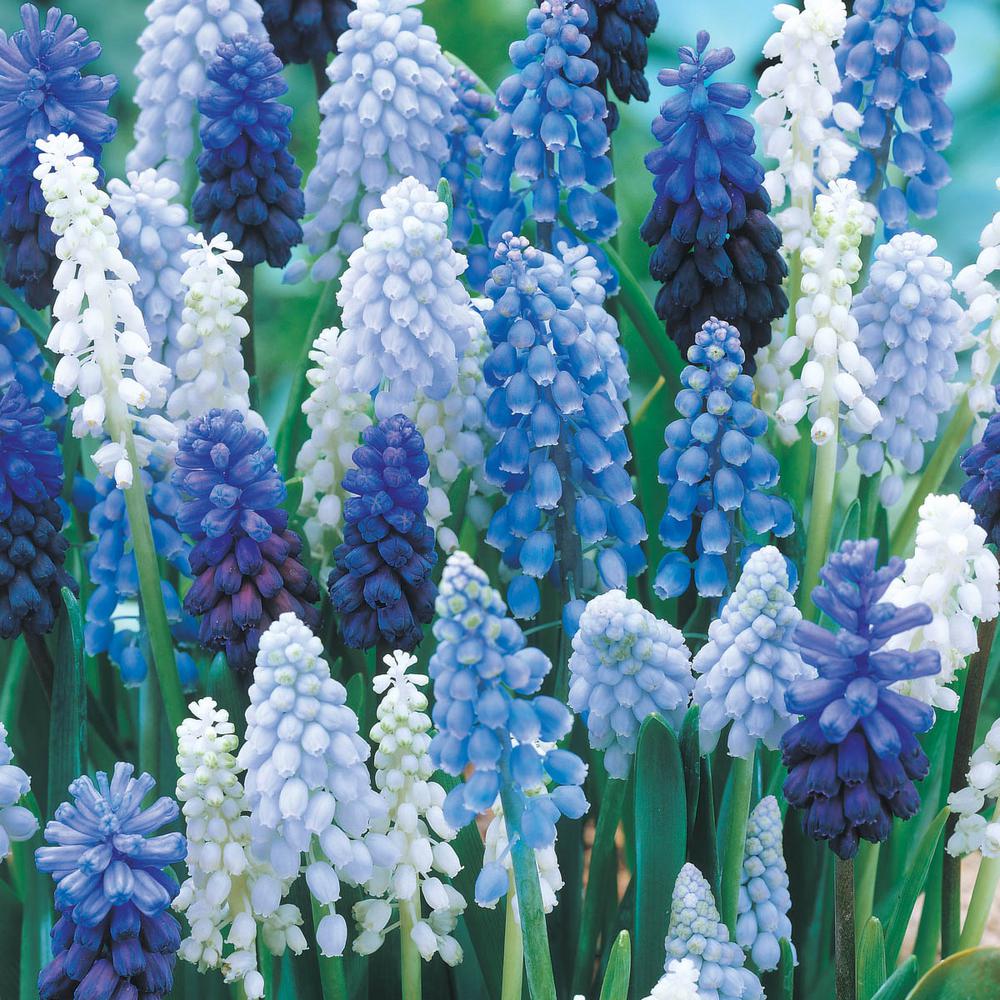

Has been used with other species of Muscari, for its diuretic and stimulant properties. Grape Hyacinth contains comisic acid which acts like a saponin, this can be poisonous to some species especially fish. Muscari, comes from the Greek word for musk, a smell given off by some of the species.įBCP do not advise or recommend that any part of Grape Hyacinth – Muscari armeniacum is eaten or used as an herbal remedy. Sometimes called the Starch Hyacinth, as the flowers apparently smell of wet starch. The flowers of various species of Muscari secrete quite an amount of nectar, and are classed as one of the useful bee plants during the spring. This is known in Italy as lampascioni and is.

However, across the Mediterranean, grape hyacinth bulbs can be a delicacy and may be pickled or cooked to provide a sharp flavour, similar to spring onions. While the flowers are edible, they can be bitter unless cooked, he says. The flower–stem is usually shorter with a dense terminal head of small dark blue flowers, looking rather like berries and having a sweet musky scent. Bracewell says that the grape hyacinth offers high levels of vitamin C. The leaves are narrow and thick, 15–30cm (6–12in) long. Usually found in sandy soils, the Grape Hyacinth is heavily cultivated as a garden plant and like the Wild Hyacinth is poisonous. Flowers and spreads freely, needing division every few years in a garden environment. They are often planted as a spring–flowering ornamental, with some species having a musky odour. Grape Hyacinth - Muscari armeniacum Family - Asparagaceae, Also known as - Starch Hyacinth, Feather Hyacinth, Purse TasselĪn introduced garden plant, a genus comprising approximately 50 species of small bulbous perennial plants, in the lily family, native to the Mediterranean originating in Turkey? Most of the species have dense clusters of blue, white, or pink flowers gathered in a characteristic rugby–ball shaped group at the tip of a stalk. Also known as Starch Hyacinth, Feather Hyacinth, Purse Tassel The common name for the genus is grape hyacinth (a name which is also used for the related genera Leopoldia and Pseudomuscari, which were formerly included in Muscari ), but they should not be confused with hyacinths. Between their delightful fragrance, stunning color, and breathtaking form, Grape Hyacinths check every box Also known as Muscari, these beauties resemble a plump bunch of grapes in gorgeous blue, pink, and white shades.

Grape Hyacinth - Muscari armeniacum, species information page. Grape Hyacinths are straightforward plants to grow in both containers and outdoor gardens, fancying little more than well-drained soil and a spot with good light.


 0 kommentar(er)
0 kommentar(er)
